What is RTLS Technology?
There is a growing interest in RTLS (Real-time Location Systems) as part of the wider Industry 4.0 and “smart manufacturing” discussion. In recent years, RTLS systems have proliferated within the manufacturing, logistics, and engineering sectors. Companies with a better understanding of these technologies and their potential benefits are poised to profit from the increased efficiency, forecasting, and safety associated with their usage.
- What is RTLS Technology?
- How Does RTLS Work?
- The three key aspects
- What are Location Indicators?
- What Are the Use Cases for RTLS Technology?
- What are the Challenges of Indoor Location Tracking?
- Types of RTLS Technology – BLE vs UWB
- Why is Ubisense’s Dimension4 UWB different?
- How are UWB RTLS systems installed/deployed?
Most RTLS systems are deployed in company ‘owned’ spaces (factories, warehouses, depots, etc) and aim to monitor and improve processes rather than track assets over long distances. There are three main aspects to RTLS:
-
Real-Time Tracking
RTLS technology allows businesses to gain better oversight of where assets are in real time over the course of that asset’s life. This could be products moving along a production line, tools within a factory environment, materials arriving at a warehouse, the location of vehicles, the location of employees – almost anything can be tagged and tracked.
-
Trends & Forecasting
By being able to measure the location and movement of assets it is possible to gain oversight of a process, becoming easier to spot avoidable errors, unnecessary steps, potential shortfalls in resources, employee malpractice, and much more.
-
Geo-fencing
Defining virtual boundaries in three-dimensional spaces has a wide array of applications, including protecting employees from unsafe areas, avoiding contamination, security applications, and more.
How does RTLS work?
![]()
Three key elements
Every RTLS deployment will have three key elements; the transmitters, the sensors, and the software that ties together all the data. Each RTLS provider uses slightly different terminology for their technology, and they will focus on the unique selling points of their particular solution. Below is a generalized breakdown of each of these key system parts:
Hardware
Transmitters (tags, badges, transponders)
Transmitters can vary in size and performance. There are two main types; passive (powered by recieving radio waves from nearby ‘exciters’) and active (requiring power either from a batter or external power source). They are attached to an item or individual, identifying that asset and relaying a signal to sensors.
Examples include:
RFID Tags
Perhaps the most common tag. These are passive (ie, require no battery power), cheap, and can be stuck to almost anything, usually used for identifying the asset.
UWB tags
Typically battery powered, these tags send out an ultra-wideband (UWB) signal that is received by sensors. The signal is very short but uses a wide frequency band, allowing highly accurate positioning data with low energy consumption.
BLE & WiFI Tags
Active RFID tags using Bluetooth Low Energy (BLE) or WiFI can send out signals that are recieved by dedicated sensors or existing netowkring infrastructure, offering positioning data but with less precision than UWB.
Smart Devices
Various smart devices can act as transmitters, most notably mobile phones.
GPS Tags
GPS tags use satellites to pinpoint their location. They only work in outdoor areas with a clear line of sight to the sky but do not required any additional infrastructure. GPS tags are less accurate than UWB tags and relatively power-hungry. It is possible to add some infrastructure to a site to enable Real-Time Kinematic GPS that ‘corrects’ the main GPS signal to improve accuracy to withing centimetres.
Sensors (receivers)
Depending on the types of tags used, the sensors used to track those tags will vary. Most indoor environments requiring more intricate tracking needs than simple passive RFID tags will allow can utilize either active RFID, Bluetooth Low Energy (BLE), or the Ultra-Wideband (UWB) technology.
By tagging relevant assets and positioning sensors around the physical space (the plant, the airplane hanger, the office, etc) sensors can determine the location of each asset at any given time, relaying this information to the relevant software/visualization system. These sensors are usually connected directly to a power source and network (either through ethernet or wirelessly).
Software
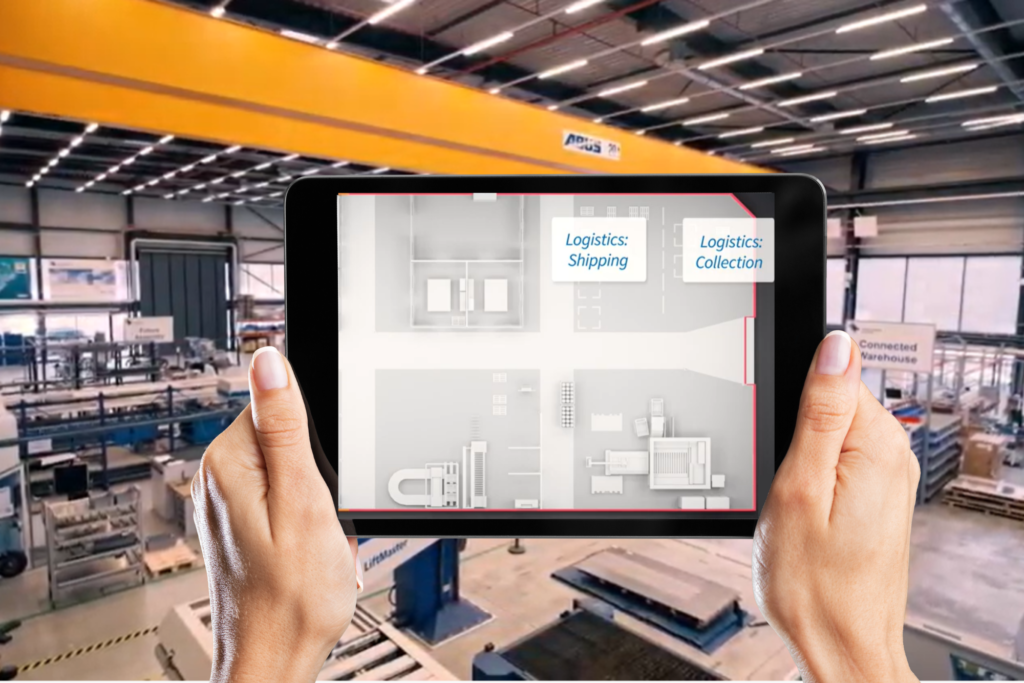
There are various software systems associated with RTLS technology, including firmware on hardware items (both sensors and tags) and middleware that interprets the location data stream and connects to external applications.
I is the software in the external applications that will be of most interest to businesses looking to leverage RTLS technology. It will determine how they will interact with and derive benefits from RTLS.
Depending on which industry one is in, the application software can vary greatly. Many RTLS companies will offer bespoke software applications designed to give you the best possible overview of your enterprise, as well as easy insights into what to optimize. Visualization is usually a core part of RTLS systems. Some things to look out for in an RTLS software solution are:
- Floorplans and zone maps – can the software incorporate your environment’s current floorplans accurately and to scale
- Software Practicality – Beyond slick visuals, does it contain the features necessary for your use case
- Quality Reporting – Are there out-of-the-box analytics and reporting functions to quickly gain insight
- On-premises or Cloud-based – Options to host the software in the most appropriate way
- API Connections – The software’s ability to connect openly with existing business systems and databases via API
- Scalability – Can this software scale as your business grows and proven to operate without bottlenecks as streams of location data is collected
- Support & Training – How simple is the solution to get started and what support is available for mission-critical applications
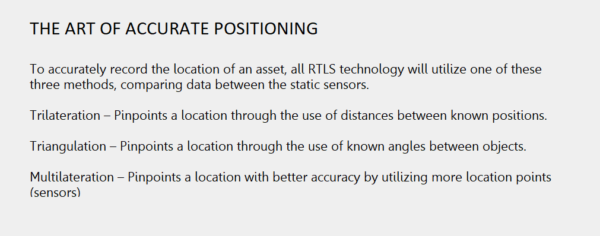
Location Indicators
Location indicators are important pieces of information that help the RTLS software determine the location of the tagged assets. These pieces of information are either sent directly from the tag itself or they are calculated by the sensor. The most common examples are:
Time
There are several different time-based location indicators. Which is used will depend on the tagging technology used and the capability of the sensor network.
TDOA (Time Difference of Arrival) – This method measures the precise difference in the time a signal is received from a tag at one sensor versus another sensor. Because the signals travel at a constant speed, by comparing the time difference a relative position of the tag from each sensor can be found and a location determined. This requires the sensors to have tighltly synchronized timing.
TOF (Time of Flight Method) – Measures the time it takes for a signal to be sent from a tag, received at a sensor, and returned ot the tag. The distance can then be measured based on the time of this ’round trip’ of the signal and the relative position from a number of sensors determined. Because signals need to be send and received by the tag, battery performance is typically degraded in this method.
Angle of Arrival (AOA)
To gather AOA data, sensors need to understand their orientation relative to one another. As a tag moves around an environment, the sensors calculate the angles at which the signals arrive at their antenna. By measuring angles from multiple sneosrs, an exact positon can be determined.
Received Signal Strength Indicator (RSSI)
RSSI measures the signal strength coming from the tag to determine its proximity (or distance) to a sensor. This is a common method for RFID tags such as Wifi and Bluetooth. Signals that reflected or blocked can have their ‘strength’ distorted making measurements less accurate.
What Are the Use Cases for RTLS Technology?
As awareness of RTLS technology grows, the application of this technology to a huge number of industries is becoming more apparent. Currently, RTLS technology is being used across industries including Automotive, Aerospace, Defence, MRO (Maintenance, Repair, and Operations), Transit Management, Warehousing, Healthcare, and many more. Some of the typical challenges being solved are:
General Asset Tracking
Tracking anything from small parts to heavy equipment within a facility can help stakeholders improve productivity and safety. Optimizing stock levels, preventing equipment overuse, avoiding production bottlenecks, automating tool calibration, and locating missing assets are just some of the benefits that stem from dedicated asset tracking.
Yard Management
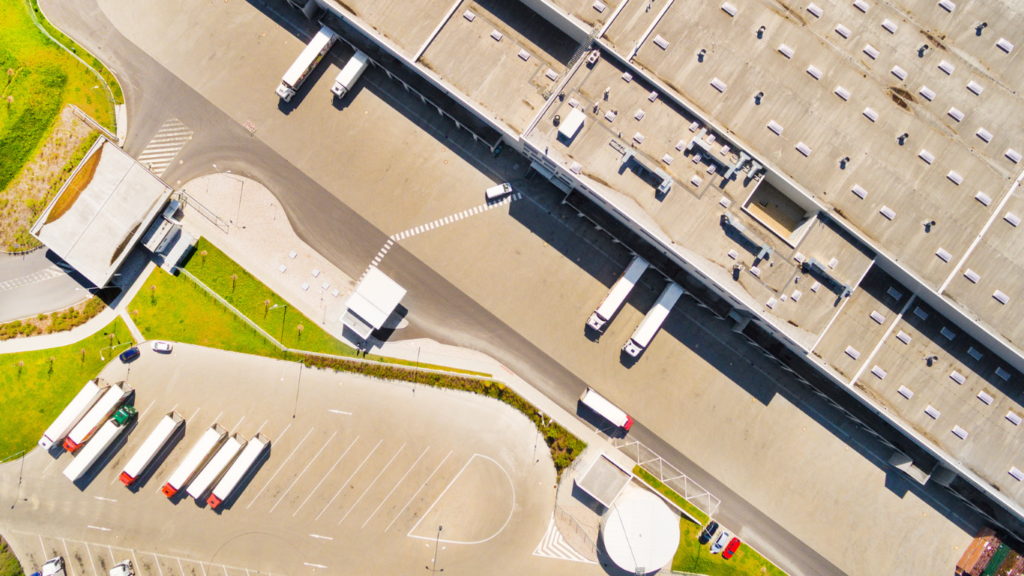
Oversight of WIP (Work-In-Progress) across a facility can prevent missing delivery schedules and lost or damaged products. Space utilization can be tracked to identify opportunities to reduce operational costs, and alerts can prevent WIP from being forgotten or misplaced. By prioritizing different WIP, employees can be notified of optimal work schedules, reducing cycle times.
Transit Management
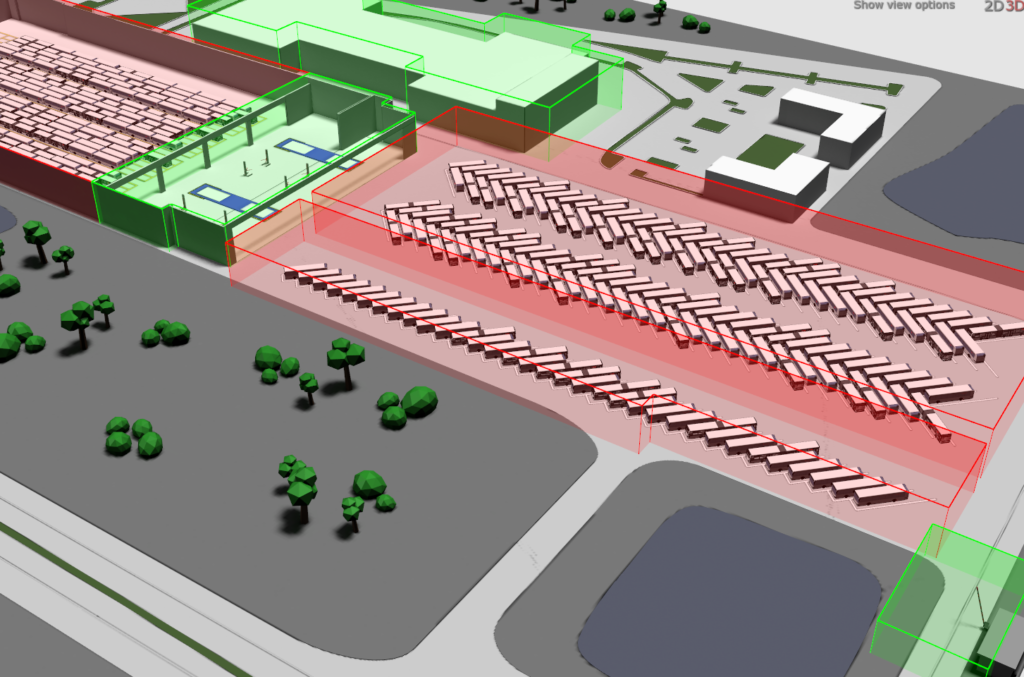
Accurately tracking the real-time location of vehicles across a transit yard can help to reduce wasted search time and help automate time-consuming processes. Drivers can be guided to the correct parking spaces in coordination with any necessary maintenance tasks. Drivers can be assigned efficiently while the authorization of entry and exit of all vehicles can be tightly controlled. The ability to react rapidly to changing circumstances (including driver and vehicle availability) from a centralised system can also save countless hours while minimizing service interruption.
Aerospace Production
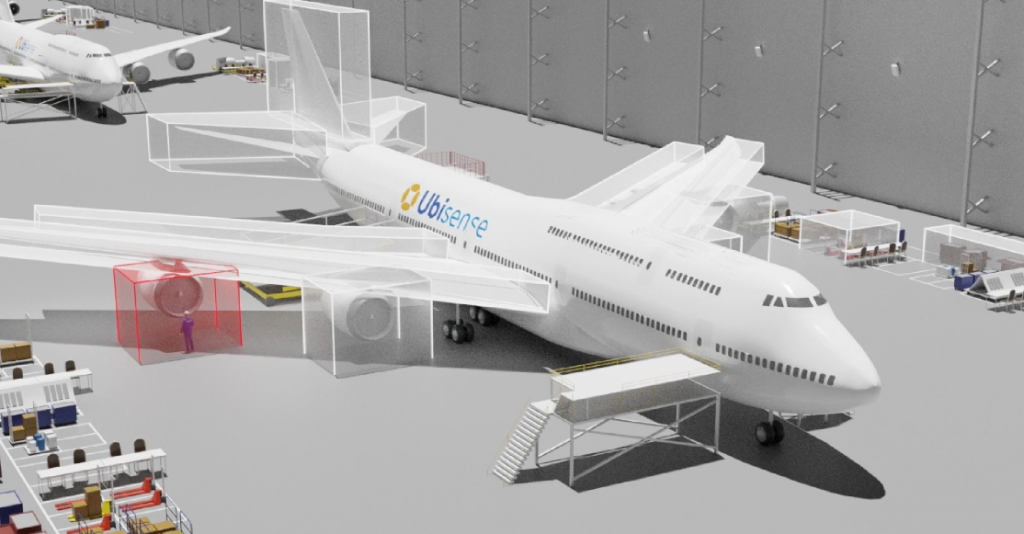
The tracking of aircraft assembly, tooling, kits, and parts can help reduce the time and budget of complex production processes. Tool management, worker safety, and production logistics can all come under the umbrella of one centralized platform.
Automotive Assembly
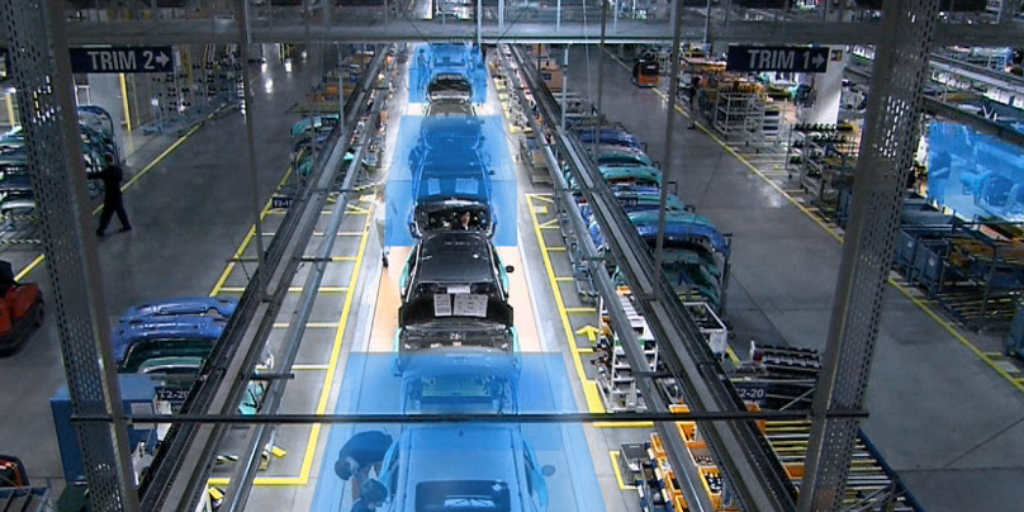
Reducing errors and expensive repair and rework processes, as well as speeding up production cycles, is helping to streamline vehicle manufacturing. By tracking the location of cars and wireless tools on a production line, tool operations can be automated. The dependence on barcode scanning can also be removed, and plant managers can better identify production bottlenecks.
Contact Tracing
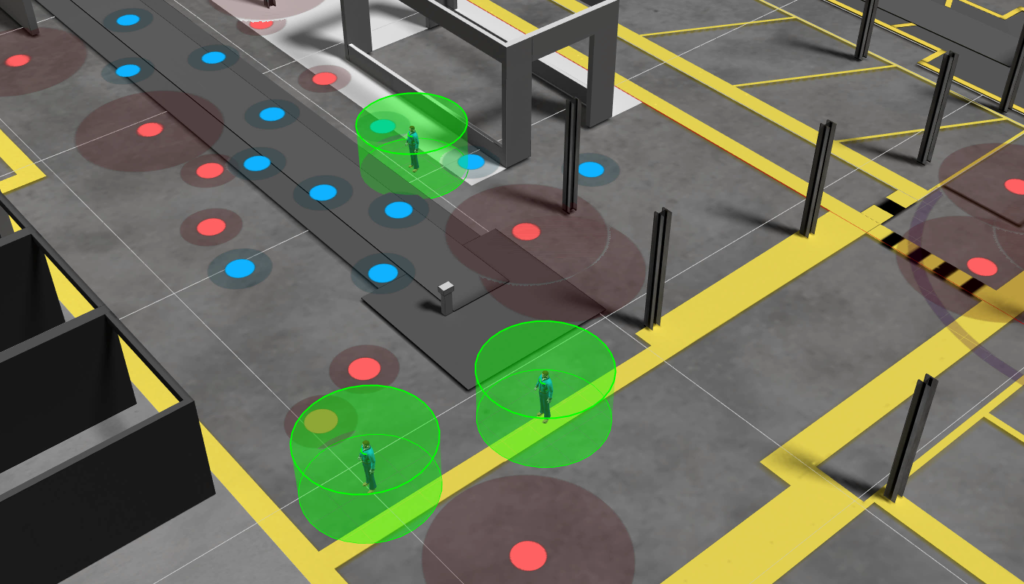
Small tags can be carried by employees or attached to their equipment. Due to the high accuracy of some RTLS systems, alerts can be sent when employees come into close contact. The context of specific environments can be accounted for, as well as the length of contact, and current guidelines on social distancing. Careful contact tracing can greatly reduce an enterprise’s downtime during pandemics.
The Challenges of Indoor Location Tracking
As a signal reflects off surfaces within an indoor environment, it can distort the signal being received by sensors.
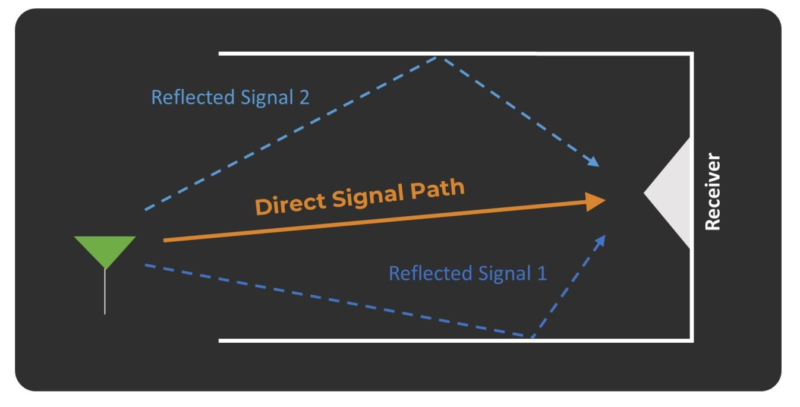
Not all RTLS technology is created equally, and some will be much better than others at tracking assets indoors, especially in complex environments. Shorter signal pulses that use a wider frequency bandwidth avoid any potential overlap from reflected signals. Locations can therefore be interpreted more easily. Ultra-wideband (UWB) uses shorter, wider frequency signals, making it well suited to indoor location tracking.
For more on the accuracy of location systems, see here.
Types of RTLS Technology – BLE vs UWB
As seen in the Hardware section above, there are many different types of RTLS solutions on offer. Some, like BLE technology, have existed for a long time, while others are comparatively new and offer advantages over older systems. Due to the many potential use cases for RTLS, some systems will be more suitable for some tasks than others.
Some of the more common types of RTLS systems are: Passive RFID, Active RFID, Infrared (IR), Wifi Positioning, BLE (Bluetooth Low Energy), and UWB (Ultra-wideband).
Due to the use of BLE and UWB systems in many Industry 4.0, asset tracking projects, and the potential importance of these technologies in the continued optimization of vast numbers of global enterprises, many people wonder whether UWB is poised to replace BLE. Below, we will take a closer look at these two technologies and see how they compare.
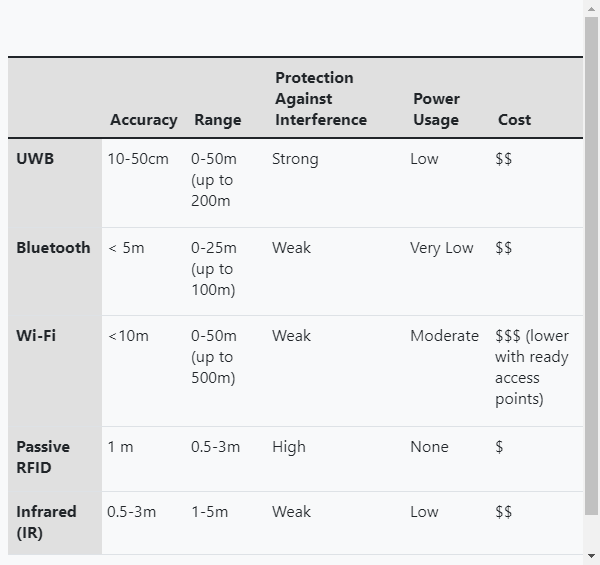
What is Bluetooth Low Energy (BLE)?
BLE is used in a similar fashion to UWB technology, utilizing both tags (usually called Beacons) and sensors (any device with Bluetooth capabilities). Beacons and Bluetooth receivers can be placed in fixed locations and assigned coordinates. When a beacon comes within a set proximity to the receiver, the beacon will deliver its location to the receiver. This response can be forwarded to a BLE system via Wi-Fi where it can be recorded and processed. The receiver’s proximity readings against several beacons will allow the receiver’s location to be calculated.
The Advantages
One of the key advantages of BLE systems Is that they can make use of widely available mobile devices. Most phones and computers already have Bluetooth capabilities, so small-scale systems can be built making use of these devices.
The Constraints
Bluetooth makes use of a specific radio frequency which could make signals prone to interference as radio technologies continue proliferate. Because BLE typically uses either only RSSI or AoA to calculate locations, accuracy and reliabiility can be compromised, particularly in clutter environments. BLE is well suited to real-time zonal tracking.
The BLE Industry
The BLE industry is growing rapidly and is estimated to grow beyond the $16.7B mark by 2026, growing at an estimated CAGR of 19.68%. This is mainly driven by consumer goods rather than industrial applications.
What is UWB (Ultra-wideband)?
UWB is all about precision. By utilizing battery-powered tags (which often come in a variety of shapes and sizes), and carefully positioned sensors, UWB can feed large amounts of real-time data into external software solutions for visualization and data mining opportunities. Not all UWB systems are the same. Those using Time-of-Flight or Two-Way-Ranging can have limited battery performance as the signal needs to be sent and recieved by the tag. Those using AoA methods require multiple sensors to have line of sight to the tag to calculate positions. By combining two different location indicators (TDoA and AoA) in a single sensor system, Ubisense Dimension4 UWB makes extremely reliable and precise location data with long battery lifetimes.
The Advantages
A advantage to this system is it can determine an asset’s location in three dimensions, which has a great number of advantages in industrial settings. The signals are also less likely to interfere with other electronics like phones and Wifi. Due to the low power consumption of UWB tags in systems like Ubisense Dimension4, the batteries don’t need replacing for many years.
The Disadvantages
To gain this extra precision, UWB systems will need more precise calibration than their counterparts and a strong data and timing sncronisation to perfect the real-time tracking information.
The UWB Industry
It is being reported that the Ultra-Wideband industry will be worth $3.2B by 2026, with a CAGR of 19.4% in the 2021-2026 period.
“Increasing popularity of UWB technology among consumers due to its low power requirement, low cost, high data rate transition, and ability to reduce intersymbol interference has significantly triggered the market growth. With increasing adoption of real-time location solutions for indoor imaging systems in industrial applications, to streamline and automate business operations, increasing efficiency and creating new opportunities, the demand for the Ultra-wideband market has gained huge traction.” – IndustryARC
How Ubisense’s Dimension4 UWB is different
Ubisense has sat at the forefront of UWB technology development for decades, making it a unique RTLS provider. The Dimension4 UWB RTLS is best-in-class technology, benefitting from ultra-accurate centimetre-level data, even in difficult environments.
Ultra-Precision
Only DIMENSION4 measures both Time-Difference-of-Arrival (TDoA) and 2-axis Angle-of-Arrival (AoA) of UWB signals in one system, providing up to 5x more location information than comparable systems.
With just two sensors, accurate 3D tracking information is possible, reducing infrastructure requirements and minimizing cost.
Advanced filtering algorithms provide an unmatched ability to cope with obstructed and reflected signals.
Heavy Usage. Many Industries.
Ubisense was founded in 2002, and the company has benefited from decades of experience across industries as diverse as Aerospace, Automotive, Logistics, Defence, Transit, Healthcare, and many more. The time spent in these industries has allowed Ubisense to stress-test its technology and create best-in-class deployment of both the hardware and software elements of its offering.
Many RTLS providers can talk the talk but run into problems during deployment. Ubisense has a proven record of successful deployment.
Tag Quality & Variety
The UB Tag
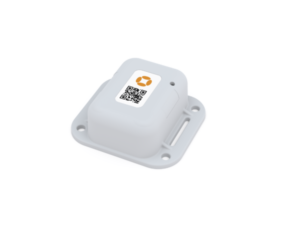
-
- Small, light, and cost-effective
- Operates in both UWB and BLE modes
- Tough body
- Can operate in -20C to +70C environments
The Mini tag
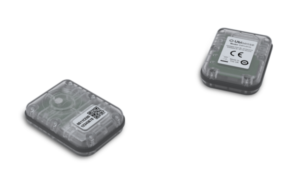
-
- Perfect for tracking small objects and people
- 40mm x 54mm x 14mm
- Dust and water resistant
- Inbuilt motion detector
- Magnetic reed switch for context-sensitive events
Industrial Tag
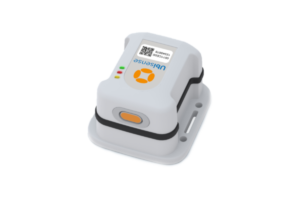
-
- Designed for extremes
- Weatherproof
- Can operate in -40C to +85C environments
Tool Tag
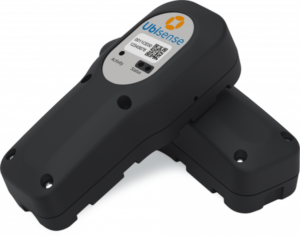
-
- Designed to be attached to tools for 3D real-time accuracy
- Robust – designed for harsh industrial environments
- Comes in 2 versions:
- Head Unit: A smaller tag powered directly by the host tool
- Combined Unit: Contains integrated, replaceable A-size battery
Tag Module
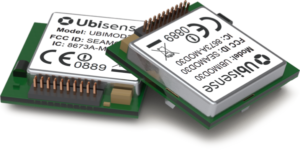
-
- Integrates into third-party equipment
- Provides the same, precise tracking ability as other tags
- Possible integrations include high-end torque tools, barcode scanners, and tablets.
Extreme Battery Life
One of the core concerns of UWB users is battery life. Both engineering talent and time spent in the market have allowed Ubisense to develop tag batteries that last up to 15 years, far longer than the competition. They even send alerts when replacements are needed.
How are UWB RTLS systems installed/deployed?
At Ubisense, deploying Ultra-Wideband (UWB) Real-Time Location Systems (RTLS) is a seamless process designed for efficiency. Our expert teams meticulously assess the facility’s layout and operational requirements, strategically placing UWB sensors and tags to ensure optimal coverage and accuracy. The installation involves configuring software interfaces and integrating with existing systems, tailored to specific client needs. With a focus on minimal disruption, Ubisense ensures swift and precise deployment, maximizing the potential of UWB RTLS for enhanced location intelligence in diverse industrial settings. To learn more about our installation process, please contact us now to schedule a short consultation.
